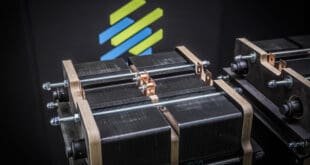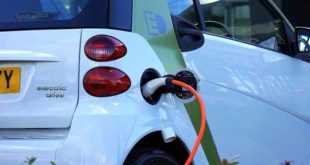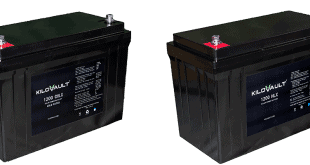Source:Chicago Tribune
CHICAGO –Imagine a world in which oil barons are forced to peddle sand because the U.S. no longer buys their oil to make gas. And imagine a world where you can take a deep breath without inhaling waste or having to look north to see whether the former polar ice cap is about to wash you away.
But ending the country’s reliance on foreign oil is going to take more than imagination.
It will take a substitute.
Bob Stempel, chairman and CEO of Energy Conversion Devices Inc., sees that alternative in hydrogen.
Stempel got into alt fuels and battery technology after being ousted as chairman of financially ailing General Motors in 1992.
He still bleeds GM blue, but differs from its approach to hydrogen. GM plans to wait until a fuel cell, which uses hydrogen to produce electricity to power a car, is ready for the mass market. Stempel favors starting with a hydrogen/electric hybrid.
“We want automakers to use hybrids as a transition to hydrogen fuel cells and to introduce hydrogen power to increase consumer awareness. With more awareness comes more demand and with more demand, more companies will be willing to accelerate plans to add hydrogen pumps. Hydrogen stations are the key to this,” Stempel said in an interview.
That’s where Stempel’s Energy Conversion Devices comes in. It adapts any vehicle to hydrogen power. And he wants to persuade GM, Ford and Chrysler to use his conversion in a limited number of vehicles to acclimate the public to hydrogen.
“The more cars they offer that run on hydrogen, the more demand there will be,” Stempel said.
A hydrogen/electric is similar to the gas/electric that’s been on the market for several years. The vehicle starts with battery power, hydrogen or gas takes over to get it up to cruising and, when a boost is needed to pass or climb, the battery pack lends a hand.
But there’s a major difference, as we found in testing a gas/electric Toyota Prius Stempel converted to hydrogen/electric.
The hydrogen/electric Prius isn’t ready for prime time. Not one station in Bloomingdale, where we had the test, pumps hydrogen. Ditto nearby Oak Brook and Schaumburg or elsewhere in the Chicago area.
With the only stations in California, New York or Arizona and with Prius range at 200 miles, it would mean a refill would be about a 1,000 to 2,000 mile flight away.
If airlines refuse to let you on board with a cigarette lighter, chances of carrying on a 5-gallon can of hydrogen are nil.
“There’s a few stations in California, New York and Arizona,” Stempel said. “California is working to develop a hydrogen highway with stations every 50 miles from Sacramento to San Diego.”
Not much help here.
Another problem is that a Prius starts at about $22,000, but the hydrogen conversion swells that to about $40,000.
Spending $40,000 to avoid having to buy gas makes sense only if gas is running about $498 a gallon more than it is now.
Stempel said enlisting automakers to do the conversions reduces that cost substantially, but he wouldn’t provide an estimate.
Once those problems are solved, there’s the matter of the tank that holds the hydrogen gas and associated hardware adding about 500 pounds to the Prius’ weight of 2,890 pounds.
The 1.5-liter, 4-cylinder in Prius develops about 110 horsepower with gasoline. Hydrogen gas doesn’t have as much energy as even liquid hydrogen, which requires more hardware, and develops only about 28 hp in the hybrid. So it requires a turbocharger for the power boost needed to roam the roads.
At the 28 hp without a turbo, you might as well stick a blade under the Prius and cut your lawn.
With what amounts to a 500-pound anchor onboard, you can hear the turbo whine as you build speed. This is basic get-there-and-back transportation. Don’t expect to make spirited lane-to-lane moves with only the fingertips on the wheel because the added weight and underpowered engine rule out pinpoint handling. The added weight also means don’t expect either cushy ride or short-distance stops when approaching the light.
Stempel is looking at ways to cut weight by at least 30 percent to soften ride and make handling less cumbersome.
The test car came with two fuel tanks holding a combined 3 kilograms of hydrogen in powder form, equal to about 3 { gallons of gas, or enough for 200 miles of driving.
The challenge here is to develop two tanks that can deliver 300 miles, a range the Department of Energy says most folks would accept.
Range, of course, depends on how much hydrogen you can store.
Stempel’s system stores the powder version in the pockets and crevices of what is best described as a sponge, which reduces the amount of space needed. When the tank is heated with a small electric motor, the hydrogen becomes a gas to power the car.
The heat creates another problem because you must cool the tank before refilling it so the powder adheres to the sponge.
To fill the tank, open the fuel door and find one coupling to attach the hydrogen pump, and two couplings to attach hoses, one hose to circulate 75 gallons of cool water over the tank, the other to bring the water back into the holding tank. So you need both hydrogen and water tanks at the station.
And to keep the water from freezing in the winter, ethylene glycol _ you know it as anti-freeze _ is added.
It takes about eight minutes to fill up with 3 kilograms of hydrogen while circilating the 75 gallons of water.
“We’d like to get it down to five minutes,” Stempel said. That’s still longer than the less than three minutes to refill with gasoline.
While a kilogram of hydrogen delivers about the same mileage as a gallon of gas, it runs about $5 to $6 per, Stempel said. Higher usage would lower that, but it’s a matter of how quickly and by how much.
Hard to believe many folks who had to choose between food and gas at $3 a gallon are going to welcome $5 to $6 hydrogen.
Stempel realizes a hydrogen hybrid needs lots of fine-tuning: reducing the weight and price and increasing driving range and fuel availability.
He says he’s not pushing hydrogen cars but rather hydrogen systems to get people talking about an alternative fuel to not only replace gasoline, but also to reduce vehicle emissions to water droplets.
The only way to prove hydrogen is the fuel of the future is to solve the problems now so consumers will make the switch.
Cost and availability are major roadblocks.
___
TOYOTA PRIUS HYDROGEN CONVERSION
Wheelbase: 106.3 inches
Length: 175 inches
Engine: 1.5-liter, 130-h.p. 4-cylinder hydrogen engine teamed with and electric motor powered by a nickel-metal-hydride batteries
Transmission: Continuously variable
Fuel economy: 60 mpg city/51 mpg highway
Price as tested: About $40,000
The sticker
$22,000 Base for Prius
Pluses: No gasoline.
No pollution.
Minuses:
Price and weight of conversion.
Price and availability of hydrogen.
Driving range.
 Alternative Energy HQ solar power for homes, wind energy, and bio fuel issues
Alternative Energy HQ solar power for homes, wind energy, and bio fuel issues







